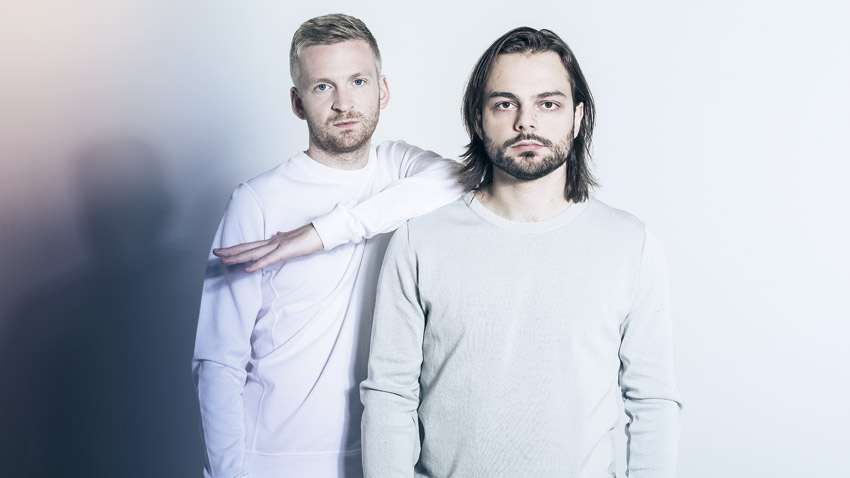Kiasmos on the “perfect mono synth”: “It doesn’t need anything on the chain and it still sounds great, which you can’t say about most synths”
The Nordic duo bringing modern classical into dance on vintage Korgs, orchestral mixing and their love of the iPhone mic
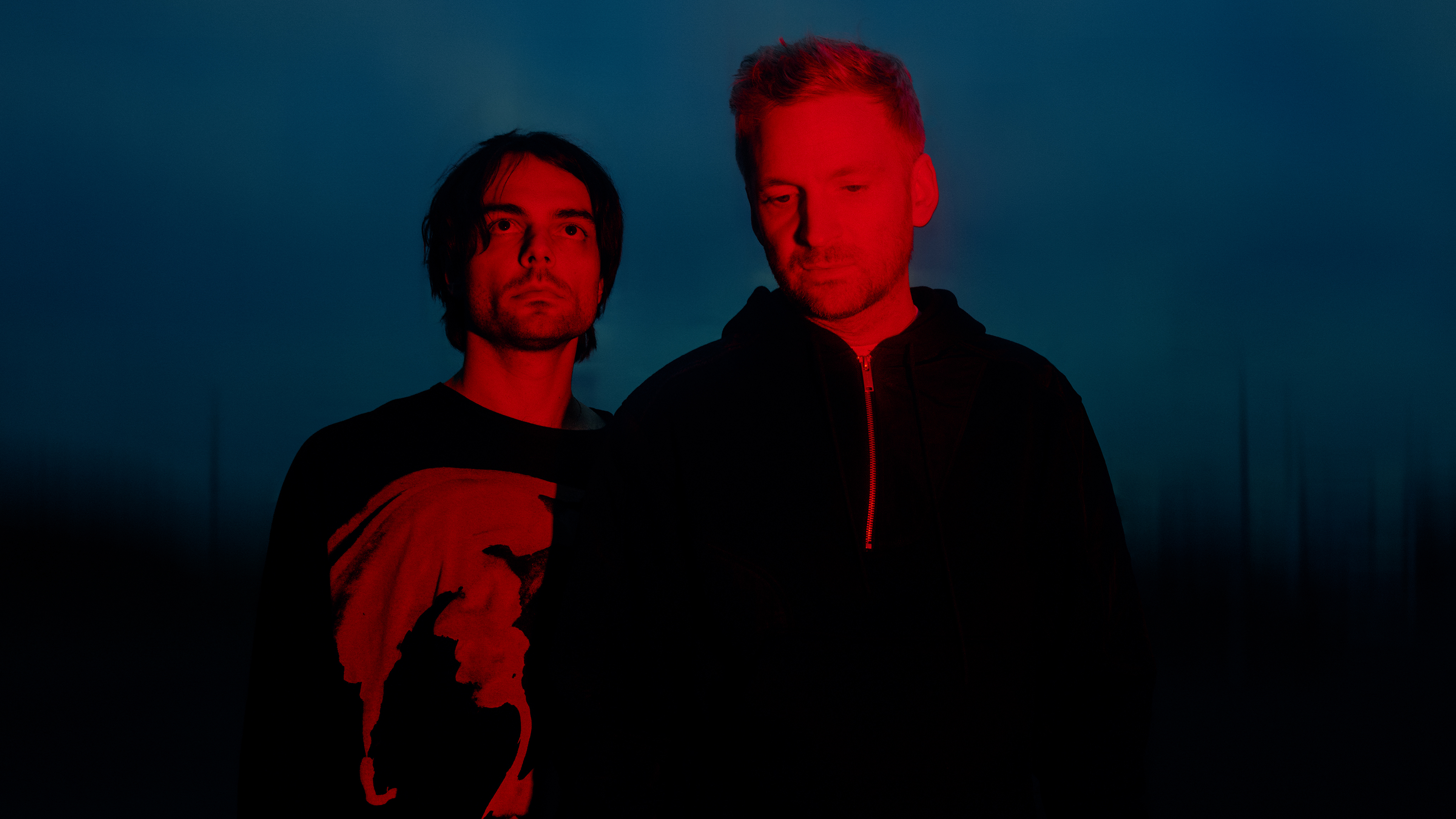
Second albums have a reputation for being difficult, but they rarely take ten years to materialize. Kiasmos debuted in 2014 with a self-titled record that sketched out a distinct sonic blueprint; delicate piano and soaring strings backed up by icy electronics and an urgent rhythmic pulse. It was minimal techno with a composerly sensibility, a synergy between acoustic and electronic sounds that brought the grandeur and subtlety of modern classical music to the dancefloor.
A decade later, and the duo has returned with a follow-up, II - but it’s not as if they haven’t been busy. Kiasmos is Icelandic composer Ólafur Arnalds and Faroese musician Janus Rasmussen, two artists with thriving solo careers.
Starting out as a hardcore punk drummer, Arnalds has become an unlikely star of modern classical, known for breathtaking solo releases and film soundtracks that wring pure emotion from the keys of his piano. A truly 21st-century composer, Arnalds is also a gifted producer, making liberal use of synths, effects and recording techniques to expand the scope of his compositions.
Both a musician and producer, Rasmussen too spent formative years playing in bands - most notably the synth-pop outfit Bloodgroup - before going solo in 2019, recording experimental electronica that shares much of Kiasmos’ sonic DNA. Showcasing a talent for adventurous sound design, Rasmussen’s work has earned him a nomination for the prestigious Nordic Council Music Prize.
Reuniting for Kiasmos’ next chapter, Arnalds and Rasmussen were committed to reimagining the sound of the project. The songs that make up II build on the foundations laid down by their debut, but they’re bigger, brighter and more expressive: a testament to what a decade spent making music can teach you. Where the first record borrowed rigid grooves from techno, the sequel loosens up with the swing of UK garage, and solo strings have been exchanged for a full-blown orchestra.
Kiasmos’ II recalls a host of contemporary electronic artists that reorient club rhythms towards a more emotive end; we can hear Burial’s shuffled woodblocks in Flown, and Jon Hopkins’ tearful ambience in Dazed. Their work remains unique, though, channelling the stark beauty of their homelands into poignant and cinematic dance music.
Much has been said about the music of Iceland evoking the nation’s landscapes, but it’s hard not to draw parallels between its windswept majesty and Kiasmos’ epic sound; it isn’t the grey Icelandic sky that II conjures up, though, but the numinous glow of the Northern Lights.
Get the MusicRadar Newsletter
Want all the hottest music and gear news, reviews, deals, features and more, direct to your inbox? Sign up here.
We caught up with Kiasmos to find out more about the making of their latest project.
When did you begin working on the tracks that would become your latest project?
Janus: “The oldest song on the album is from 2017. It’s pretty much right after the Blurred EP, then we didn’t write for a few years, not much at least - we were busy with other projects.”
Olafur: “We got back to it full-on in 2021 and spent two or three years actually writing.”
Would you say that your dynamic as creative partners has changed during that time?
Olafur: “Not a huge amount, actually. We both still have similar focuses. I tend to focus more on like… these four bars of music. I like to get that totally right and Janus is focusing more on where that then goes. That’s a cool combination.”
Do you feel you complement each other in that way - Janus on the bigger picture, and Oli focused on the details?
Janus: “I guess that’s right. I work a lot in pop music, so I want things to happen pretty fast - I’m a bit impatient in that sense. Oli likes to take his time.”
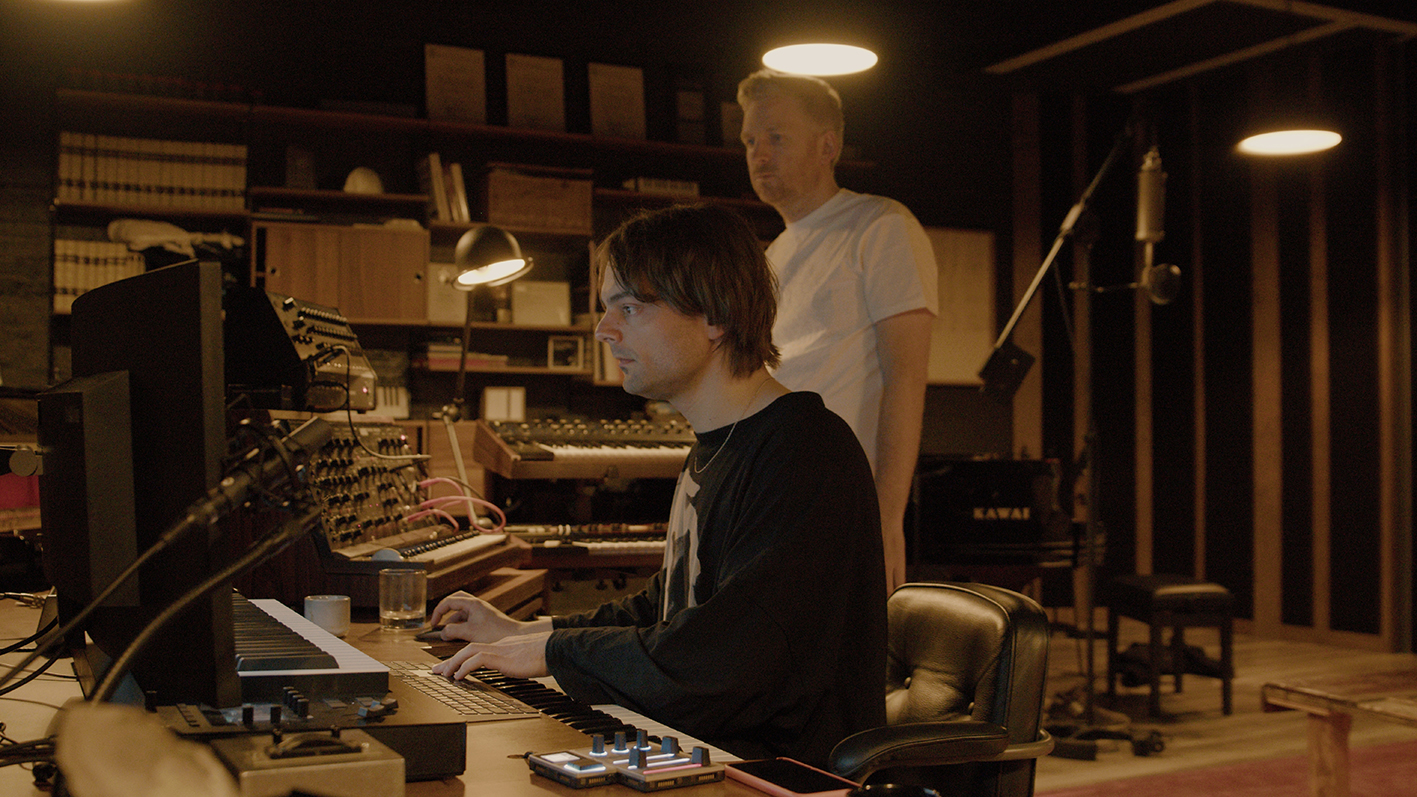
Would you say either of you tend to fall into a particular role in the studio?
Janus: “Oli is more the keyboard player, so he plays more keys. Then it depends on which DAW we’re working in, whether we’re starting out in Ableton or Pro Tools. If you sit in the chair with the DAW then you have to be the one who is the quickest.”
Oli: “Generally, I do more chords and keys and Janus does more of the beat programming. That’s definitely not a rule and we often switch completely. But that’s a general throughline.”
Which of you tends to work in each of those DAWs?
Oli: “I’m more Pro Tools and Janus is more Ableton, but we both use both.”
Which DAW do the tracks typically start off in?
Oli: “They often begin in Ableton. I also really like Ableton for new ideas, because you can work so fast and it’s so creative in that way. I often use it in my own music to start new ideas. But for me personally, as soon as I get into the stage of thinking, ‘how does this sound? How does this arrange itself? Where does it go?’, then I like to switch over.
“That’s what we did with a lot of the tracks. The basic beat is done in Ableton, the basic chord progression is done in Ableton, but any sound design - deeper, detailed stuff that we spend days or weeks on - we do that in Pro Tools.”
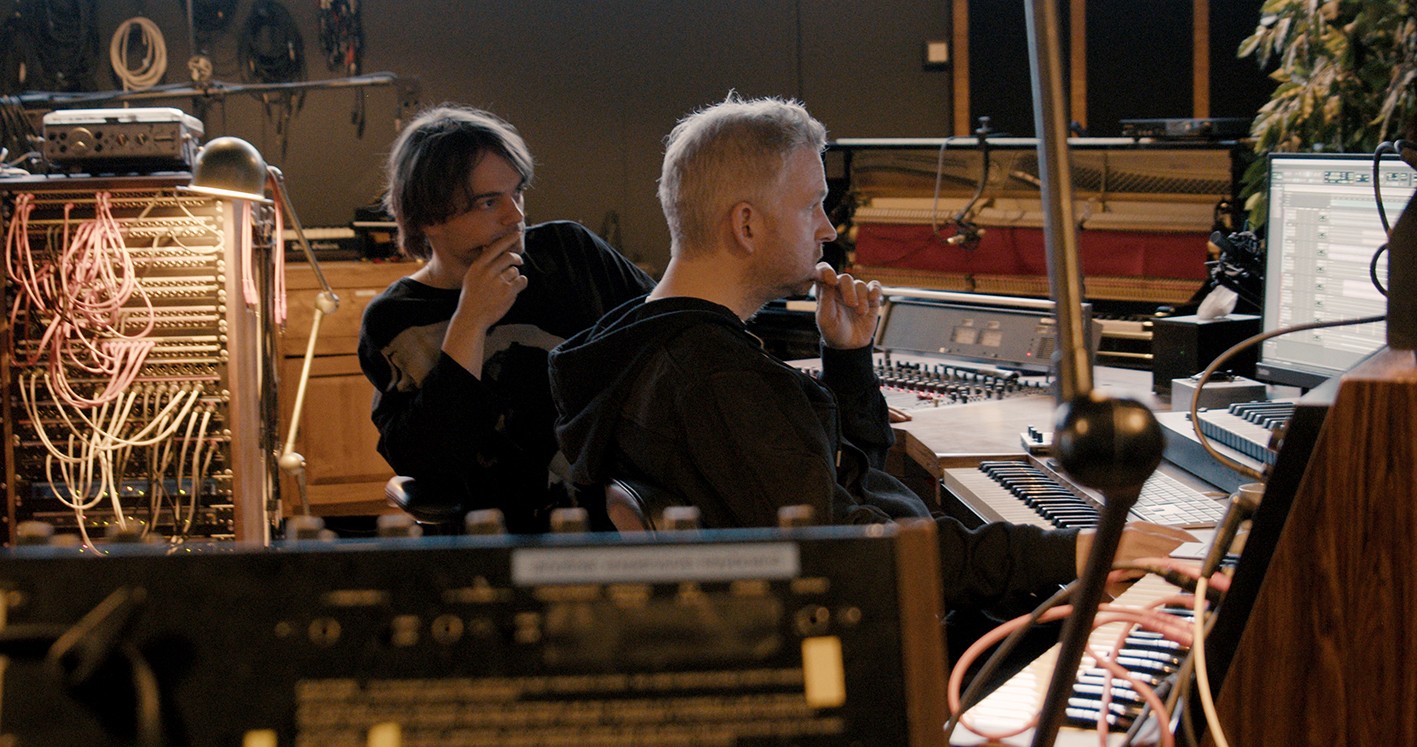
You’ve said that you wanted to “one-up” yourselves on this latest project. Can you recall how that attitude manifested itself in the studio?
Oli: “Mainly it was time. The last record we did in basically two weeks. For this record, I would say it was very good if we finished a song in two weeks. [laughs] So the details and the work that went into it is very audible.”
Did you try out any new methods or techniques?
Janus: “If there was a new library or plugin, we would study that and try to write around it. Slate + Ash’s Cycles is one of them. A lot of the songs on the album are based around a process of tweaking a patch so it’s just perfect.
Oli: “I got the Nonlinear Labs C15 synthesizer sometime in the middle of us writing the record. It's this really beautiful physical modelling digital synth - it's a hardware synth. That actually found its way into several songs on the record as well.
“With that one, it's the kind of a synth that when you get it, you spend a week with it before you actually get anything that sounds nice out of it. It's so deep and complex. So I think that was very different. Whereas with our old record, we would have just found a preset that works and said: let's just jam with this and make music. This time around, I would often spend a week finding the right sound for a song.”
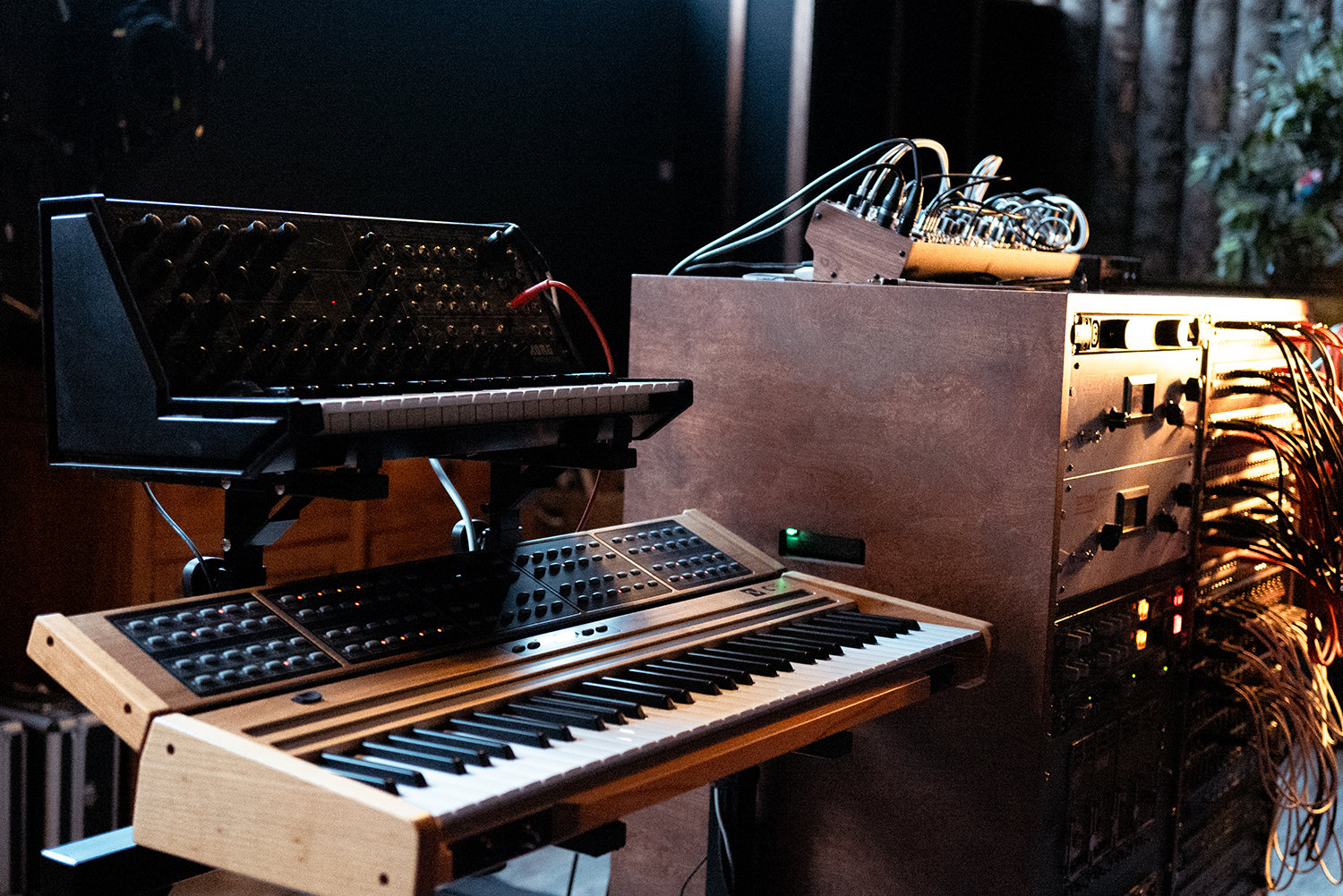
So you went a bit deeper on the sound design for this project?
Oli: “A lot deeper. We went quite deep on the semi-modular old Korgs as well. I started obsessively collecting the whole line of old Korgs - we were going quite deep with those, making some very complex patches that are often the key element in a song.
“For most of the songs on this record, we used the PS-3100, the big polyphonic Korg. I connect it with the SQ-10 and MS-50 to give it a lot of extra modulation. Some of the songs, like Squared, the last song on the album, it’s the PS-3100, but it’s also the MS-20, MS-10, SQ-10 and MS-50.”
You’re mostly sequencing your synths, then, rather than playing?
Oli: “Sequencing mostly, then playing the knobs.”
Janus: “Sending out the MIDI automation if we want something to be super smooth over a whole song. Even our vintage synths have MIDI retrofitted.”
Blending electronic instruments with acoustic sounds is a hallmark of your sound. Is it a challenge in the mixing process to get those two worlds to sit cohesively?
Oli: “Yeah. With this one we went for the orchestra. Previously, we’ve mostly just done really close-mic’d studio strings, just soloists or a quartet. That's actually a bit easier because you don't have a big room involved. So with this, we went for the orchestra in a larger room, and it was quite a challenge to make that somehow fit into a tight electronic mix, when you have so much room sound.
“My usual way of approaching it is like: don't be afraid of the EQ. Because essentially it doesn't matter if the orchestra sounds natural or not when it's in a full electronic mix. What matters is that there's no frequencies or notes resonating in an unnatural way next to the electronics. So you just surgically cut - drastically. If you listen to it solo, you would never mix an orchestra like that. But it's the way to make it work with electronics. It has to sound almost a little bit unnatural to work.”
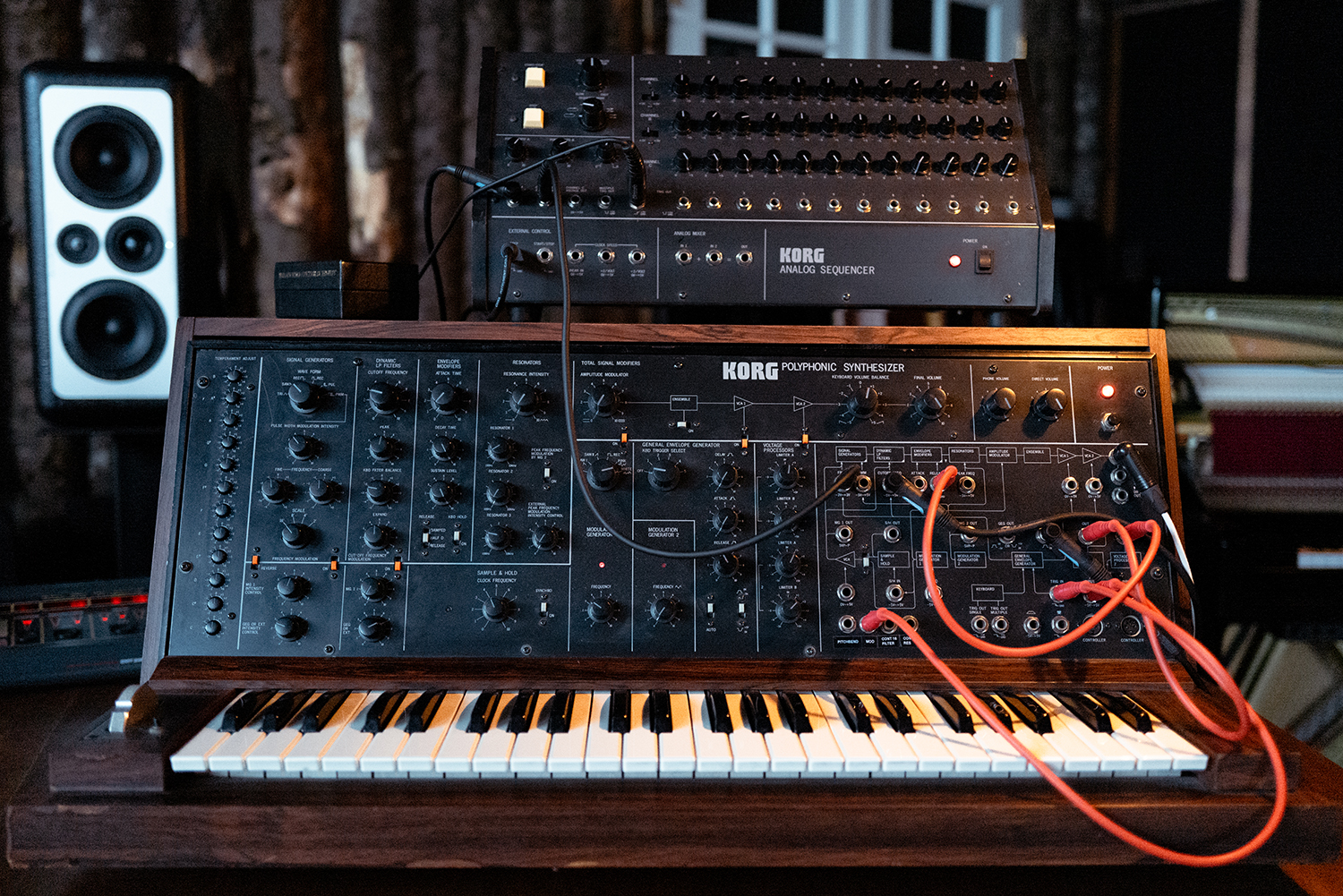
Minimalism is another key element of your aesthetic. How do you know when to stop adding elements to a song?
Janus: “I feel like this album has some songs that are not minimalist. Especially our last single Burst, that was kind of a nightmare - it had almost too many elements. You stop when there’s no space for more, I guess.”
Olafur: “There's always this moment when you realise you put too much in and you have to start taking things out. It just goes in circles like that, doesn't it? You put too much then you take too much out and you put too much again and it never ends. It's a fucking nightmare. [laughs] I don't know when to stop.
“I stop when there's a deadline. I stop when I feel like, if I released this today, I would be okay with that. I would be proud of this. I just try to think, in five years when I look back, will I still be okay with this song? If I think yeah, I would be cool, let's release it. But that doesn't mean it's finished.”
Janus: “But now working on live shows, there are songs that now we’re like: ‘oh, why didn’t we do this?’ Only a few months later, having finished the album, we already find answers to how we could have solved them differently, just because we’re seeing them in a different setting. So they’re still evolving, in a way.”
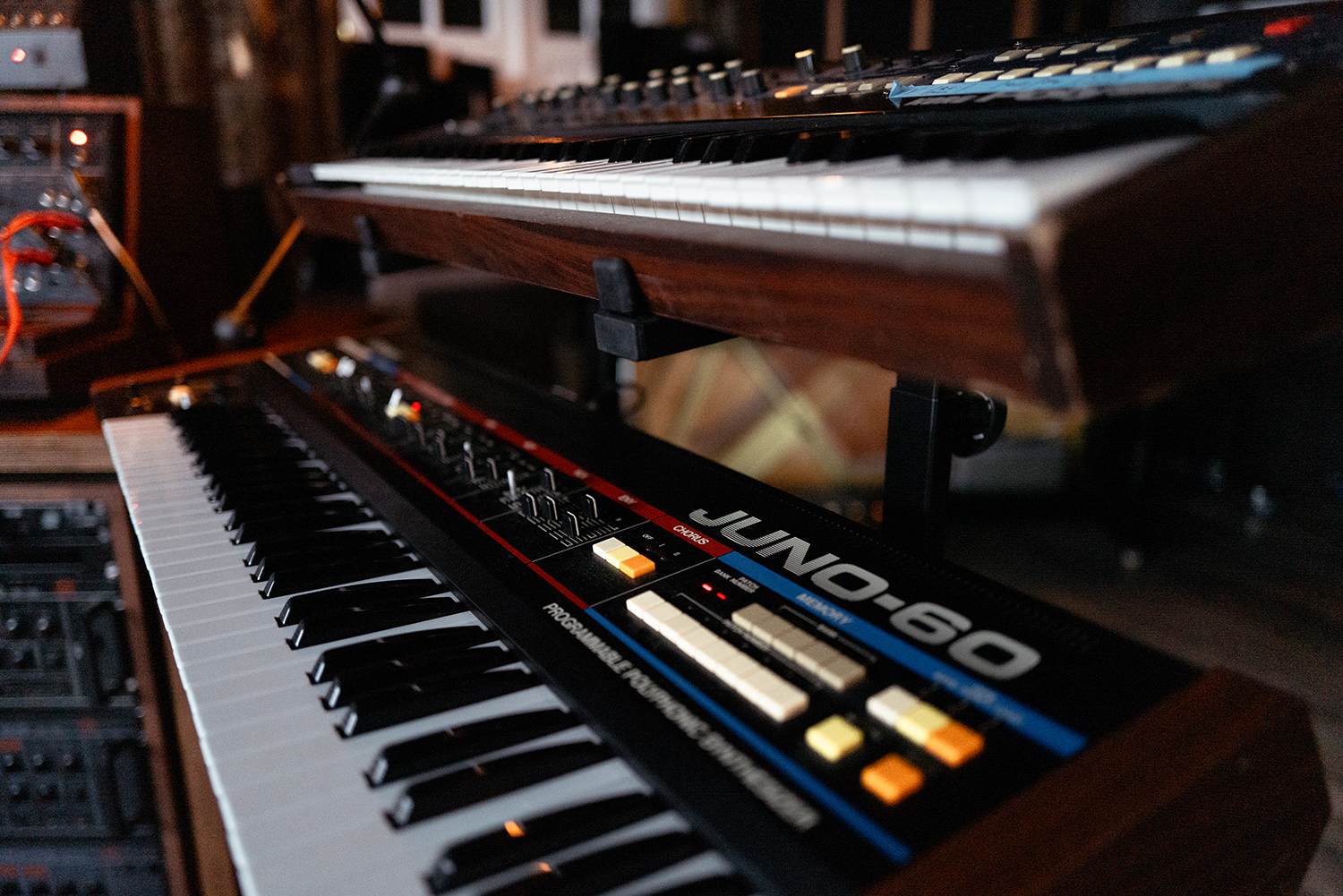
How are you approaching the live shows this time around?
Olafur: “We’re trying to find the perfect balance between allowing for a good visual show, which usually means timecode, but also being playable and feeling live. The question is how to have a timecode, but still actually play live. Also, how to make it simple gear-wise and not to use too much gear.
“We've burnt ourselves on that in the past, bringing all our analogue synths, and they're always breaking. We would be travelling with backup Junos and that’s just ridiculous. There's not that many Junos in the world, we shouldn't be ruining them on aeroplanes. So we’re going all MIDI.”
Janus: “We’re using really carefully tweaked patches on the Softube Juno Model 84.”
Oli: “It’s the most accurate Juno copy we’ve found. It’s acceptable, at least for a live set. We replaced some of the analogue synths with software emulations and then we play them with MIDI keyboards instead of bringing the actual synths.”
Do you tend to use many soft synths in the studio?
Oli: “It’s mostly hardware. We might use soft synths in the early stages when we're trying to be fast and just focusing on writing melodies. I don't think any soft synths actually ended up on the album. One sampler, Slate + Ash Choreographs, which is kind of a soft synth, but it’s just sampled synths. That ended up as a lead line on Burst, but apart from that, it’s basically all hardware.”
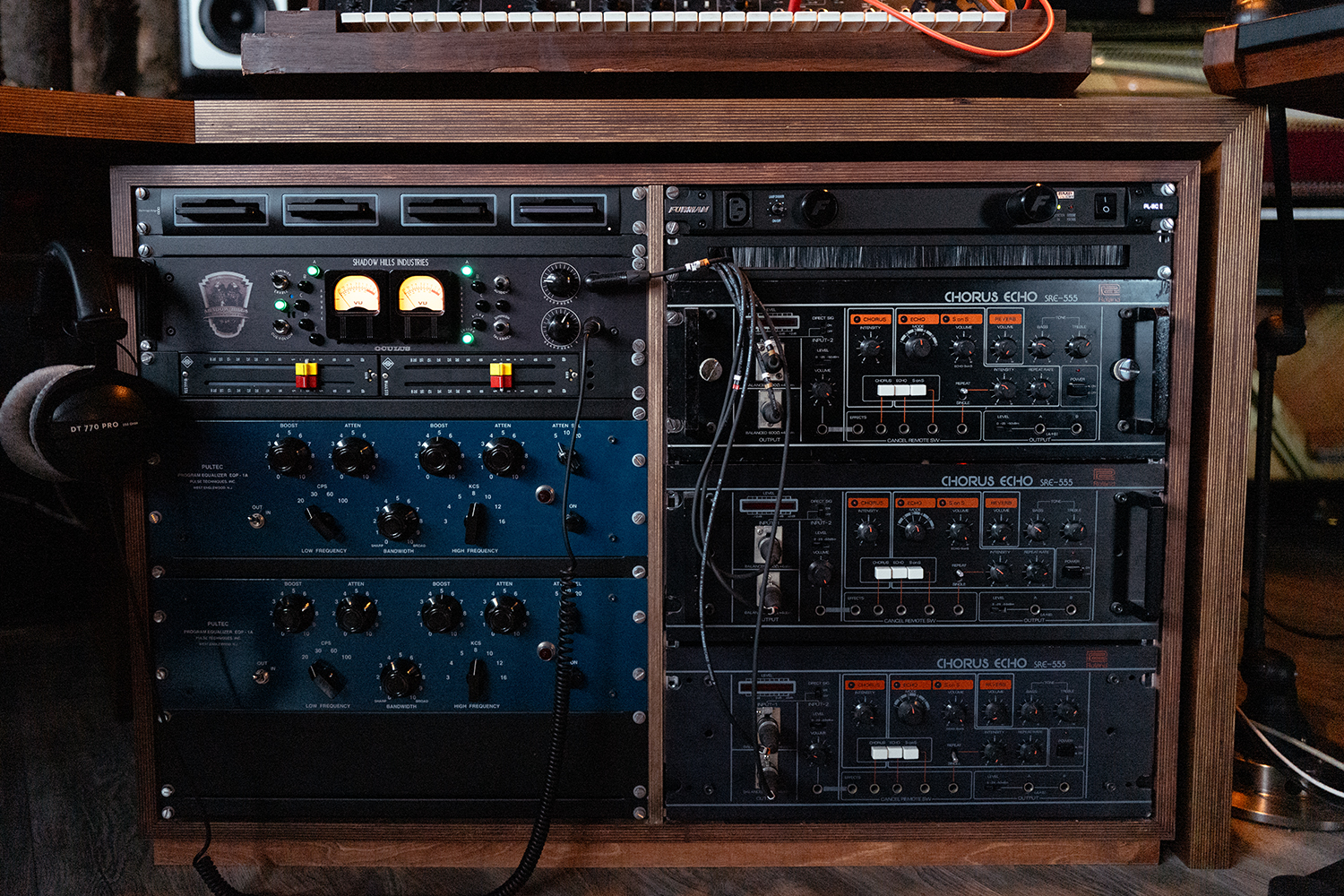
Creating space and atmosphere is something you do so well. Do you have any preferred techniques or tools for creating these expansive atmospheres in your tracks?
Janus: “We do a lot of high ambient stuff, especially to give tension for builds. Basically, our songs never have something static. There are always ambiences rising throughout the song, you can never loop it back. Which also makes it really annoying when you're playing live, because you can never loop a few bars back because there's always risers or ambiences that keep being pushed up.”
Oli: “One of our favourite tricks we do in Kiasmos - which I actually only do in Kiasmos, not in my own stuff - is creating distorted feeds through Space Echos. You've got maybe two Space Echos, or if you've only got one you just run it twice, and you really drive it, you have a lot of feedback and maybe even change the time a bit so it's kind of wobbly. Then you cut all the low frequencies all the way up to 4kHz, so it's just the really high silky stuff that's left. That’s a really wonderful, high-end ambience that just fits on top of anything. We've used that quite a lot.”
We never have four-bar loops. If we have a chord sequence, it's five bars, it's seven bars, it’s six bars
“Another really important thing - something most people never notice, but creates that ambient feeling in our music without it being a specific element - is that we never have four-bar loops. If we have a chord sequence, it's five bars, it's seven bars, it’s six bars very often. Or it might be one circle of four and the next loop is three, so it’s basically seven.
“That gives the music this kind of quality where you don't know where it begins. We often spend a lot of time when we're working on chord progressions to try to make it feel like there is no beginning, to make it feel like a constant cycle. That's something that goes more into the actual composition to make the music feel more ambient.”
Janus: “The music is in 4/4, so to also have four-bar patterns, it becomes a little bit too on-the-nose for what we do, at least. You’ve got to break the chain a little bit somewhere. It’s actually way harder than it sounds just to only change that, to take away one bar without it feeling super jarring. Sometimes that’s the part that’s the hardest - it’s not always easy to find these perfect loops, seven bars, nine bars, whatever they are.”
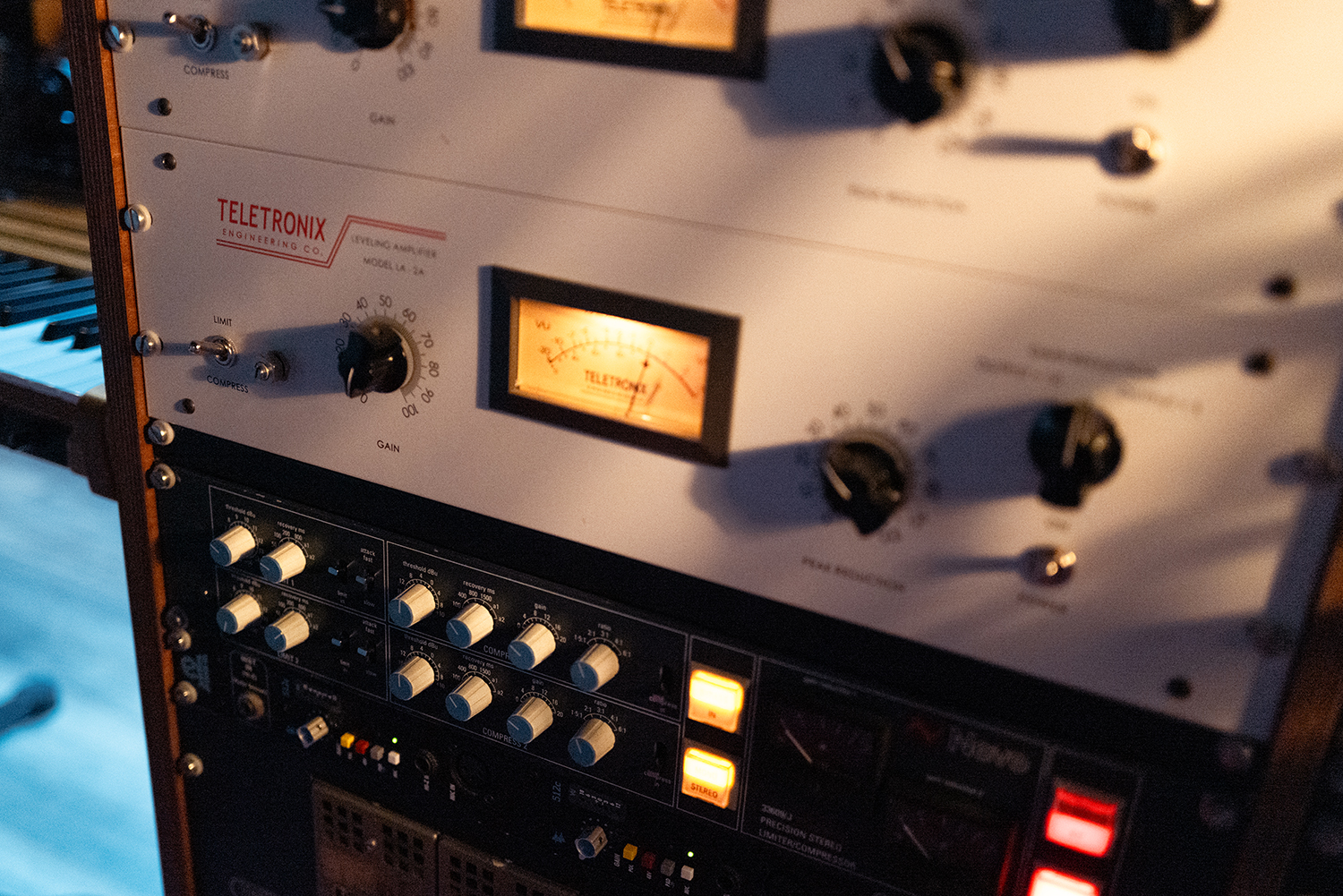
The drum patterns on this record feel very different this time around. There’s more of a swung, UK garage sound, as opposed to the techno feel on your first album. Was that a conscious influence?
Janus: “Whenever we write music, we’re influenced by what is happening around us musically, it’s impossible not to be. Right now, swing and BPMs are higher than they were back when we made the first album ten years ago. Also just generally, I really like swing these days, and I feel like DAWs have gotten really good at working with swing.”
Oli: “It’s also the tools we’re using that are encouraging this. Ten years ago, DAWs were terrible with swing: you could choose to turn swing on or off. [laughs] You couldn’t really get detailed on the groove, so people just tended to make it straight, rather than manually nudge everything to create swing. Now there’s just a groove template you can put on.”
Ten years ago, DAWs were terrible with swing: you could choose to turn swing on or off. Now there’s just a groove template you can put on
Janus: “We use a lot of Beat Detective in Pro Tools. Slice up the regions and then apply swing and do fades so it’s super transparent and sounds incredible. It’s so clean, it’s even cleaner than warping in Ableton, because Pro Tools is literally slicing up the audio to the transients and then moving them. You can do it immediately, like - how does this sound with this amount of swing? Then dial it back. If you do that by hand, you’ll never finish.”
Are you mostly programming beats via the DAW or working with any hardware drum machines?
Oli: “A lot of it is actually me playing the drums.”
Janus: “There’s a lot of live percussion and drums. I would maybe sometimes make a foundation of a beat, and we would add a loop of Oli playing that we already recorded at some point over the years.”
Oli: “I have a recording room in my studio and I have just three mics on the kit. I use the Glyn Johns technique on the overheads, equal distance from the snare, really beautiful stereo image. Then I have this really old RCA mic, it’s a prototype of the RCA 44 so it’s actually older, but it’s kind of the same mic. It’s from the ‘30s. I put that on the snare and that’s it, I have nothing on the kick. It’s omni, so it picks up everything.
“It’s a three mic setup, and I play with brushes and have a lot of percussive things on the kit, cymbals and stuff. We usually record a lot of different ideas, and like Janus was saying, we put it into Beat Detective in Pro Tools and fit it into different songs.”
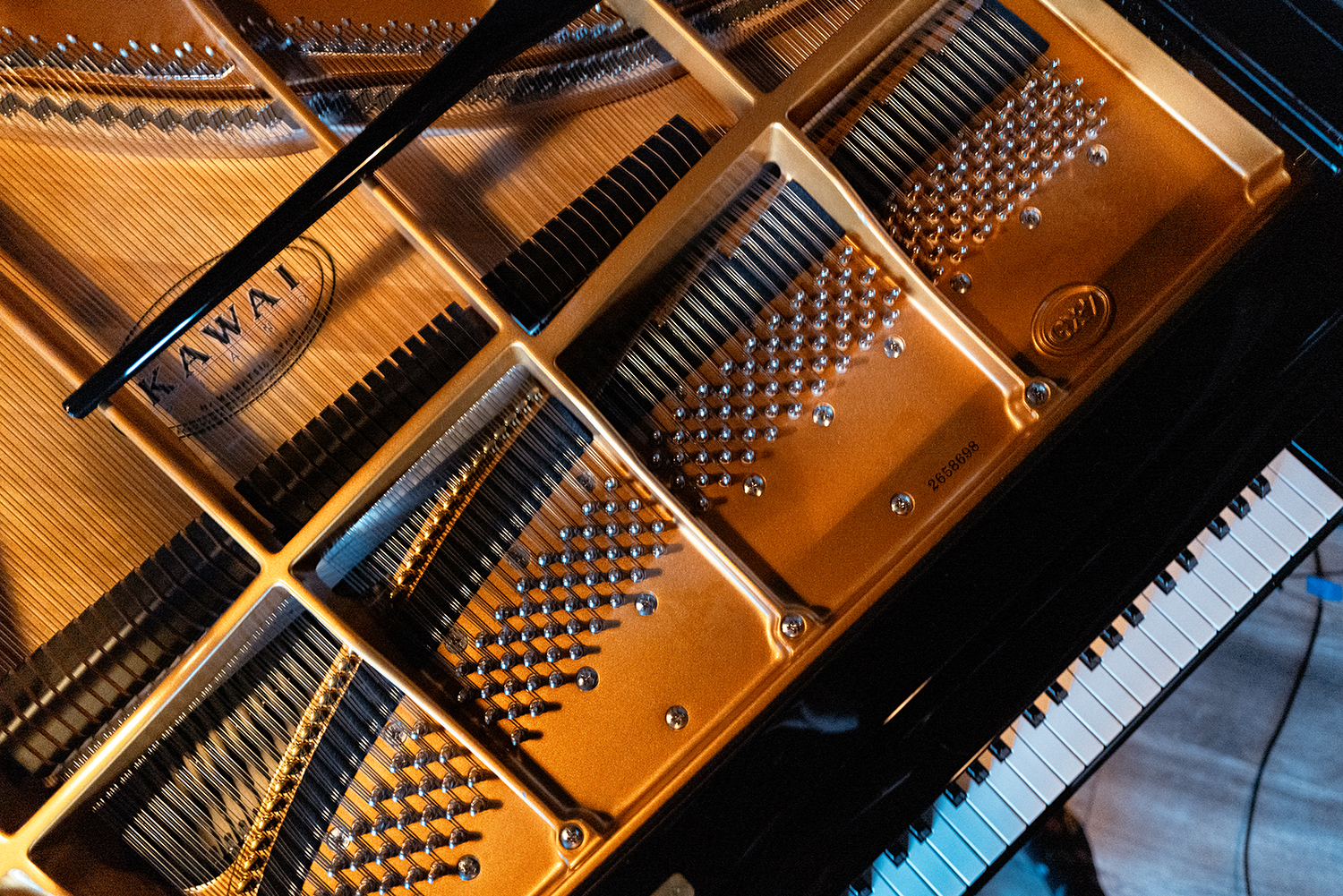
So you’re treating the recordings like samples, in a sense?
Janus: “Yeah. We use a lot of transient designer and really pump up the transients and make them snappier, or the other way around. We’re moulding them into a beat.”
Do you have any go-to gear for drum processing?
Oli: “I’m usually recording them through the Neve 33609C that everyone likes to use on drums. That’s usually just on the input, very mild. Preamp-wise we’re using old Siemens WSWs to record the drums, two preamps. Apart from that, not really, it’s good to get them pretty clean. If you’re moulding them a lot afterwards it’s good to have them pretty clean.”
Does the same go for the hardware synths you’re recording?
Oli: “We tend to process them a little bit more on the way in because it's so easy to redo them if you did it wrong. With drums, you're capturing a performance but with the synths, you're usually capturing some MIDI sequence that you're sending into it.
“I'm personally less afraid of putting a bunch of stuff on the synth on the way in - that's totally fine. You can always do it again. We’ll often record them through a bunch of outboard, whether it's the Pultecs or the LA-2A compressor, especially for deep bass sounds. Space Echos and hardware reverbs are often just printed on to it on the way in.”
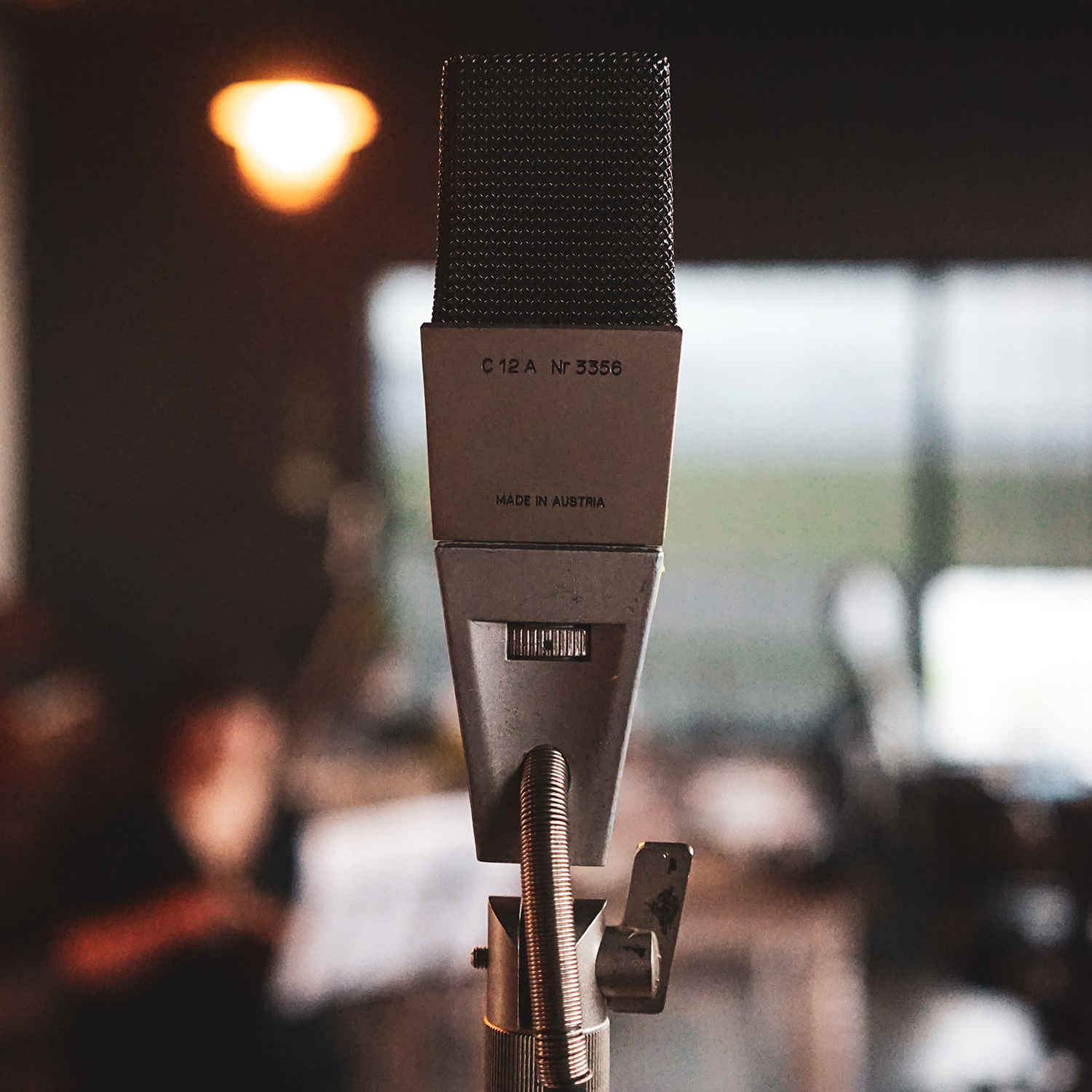
You both have separate studios in the same building. Do you tend to work most in one or both split your time between?
Janus: “We tend to work most in Oli’s studio, it’s a bigger room that’s nicer to be in when you’re doing longer sessions.”
Oli: “It has windows! [laughs]”
Janus: “But mine is mastering-grade, it’s isolated. So it’s good for that sort of thing. But it's nice to be somewhere where there are windows. Sometimes we work separately - I make a beat in my room and I'll just bring it down to Oli’s place.
Sometimes we work separately - I make a beat in my room and I'll just bring it down to Oli’s place
“There are a few songs that were started in my room. There are actually two I think, the opening track of the album was done in my studio. That’s my MS-20. But I think for some reason we just went to Oli’s, also because we end up in Pro Tools. I don't run Pro Tools all the time. Especially now it's a subscription, I don't really have a subscription every month. So I go to Oli’s place.”
Oli: “In my studio we have access to more pianos. I have a good live room too.”
Tell us about how you recorded the piano for this project?
Oli: “It’s a couple of different pianos. In the middle of making the album, I got a new grand piano that was customised for me by Kawai. I've been working with them for a few years now and they will lend us pianos for my tours. They actually created a custom felt rail system on a grand piano for me, so I can play a grand piano with that soft felt sound. That's really wonderful. Because you have the softness of the upright felt sound, but the grandeur of the grand piano.
“I had just gotten a piano when we were doing a lot of piano recordings, so I was really still finding how to record it. I was trying different mics. But I think most of it was using the old AKG C12A mics, which are the old versions of the C414. They became my favourite for that piano. We also use the new Neumann M67s for a couple of tracks. They became a lot more clear and open. So we were kind of trying different things, to be honest.”
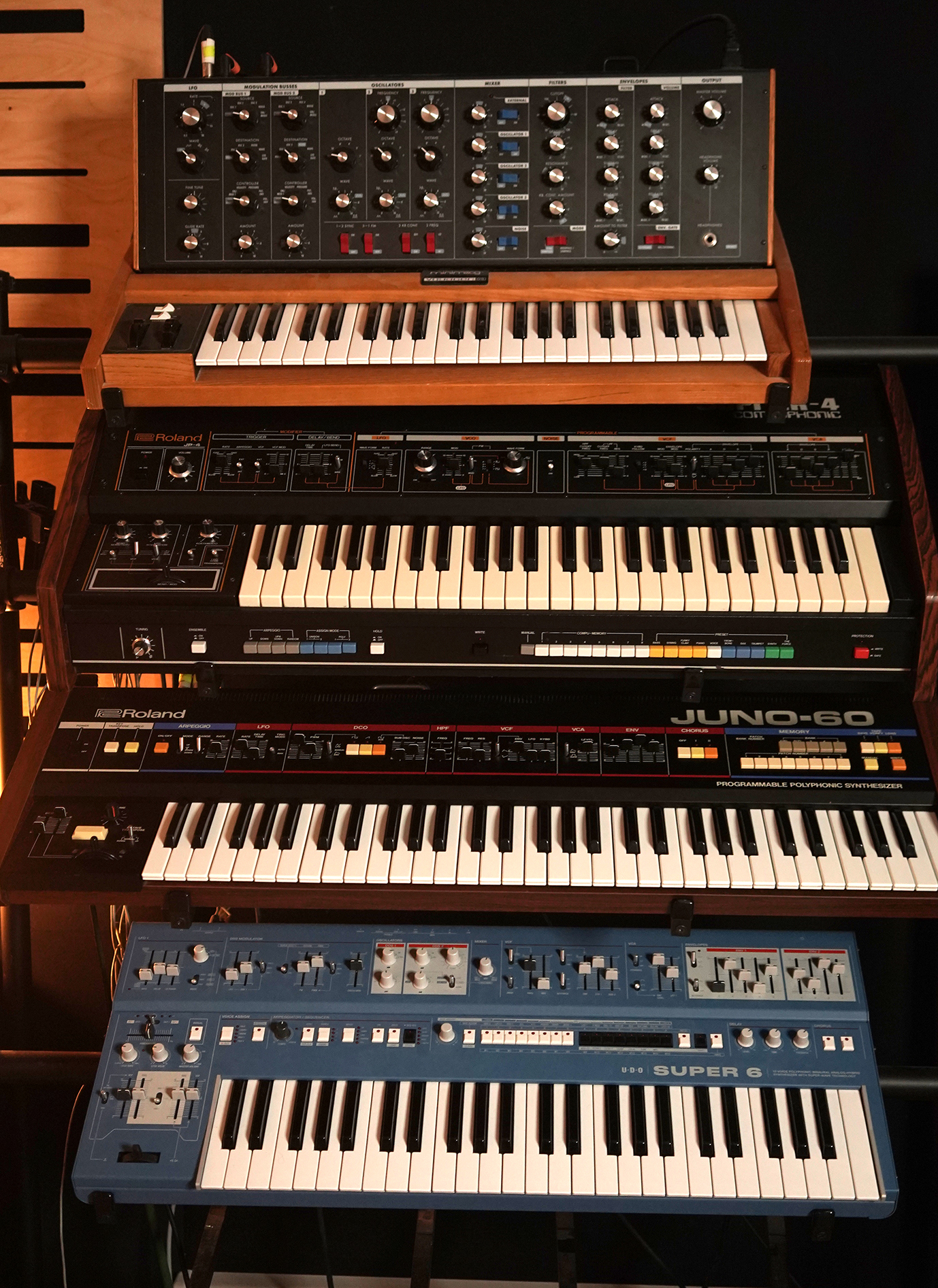
Do you tend to experiment with new gear often?
Janus: “No. I’ve had the same synths for so long. When you have a Juno and MS-20, those synths give you so much mileage. I have a Moog, for example, but I never touch it because the MS-20 does everything, without taking too much space in a song. It’s the perfect monosynth, to me. It always fits into a production. It doesn’t need anything on the chain and it still sounds great, which you can’t say about most synths.”
Oli: “Before we got the Nonlinear Labs C15, I hadn’t bought a synth for five years. I’ve got everything I need. It’s distracting to always be getting new stuff in. It’s the same reason I never got into modular, because I’m just afraid of the black hole I would get lost in.”
There’s nothing on your wishlist, then?
Janus: “Well... there’s always something on the wishlist. I would love an old Memorymoog, that’s been my dream forever. There’s something about it. But I don’t know if I want to own it in Iceland. There aren’t really people here who can repair it.
“That’s also one of the reasons why you don’t want a lot of synths. If you’re running a lot of older synths, there’s a whole lot of opportunity for stuff to break. There’s nothing more tedious and boring than having a whole studio full of broken synths and gear.”
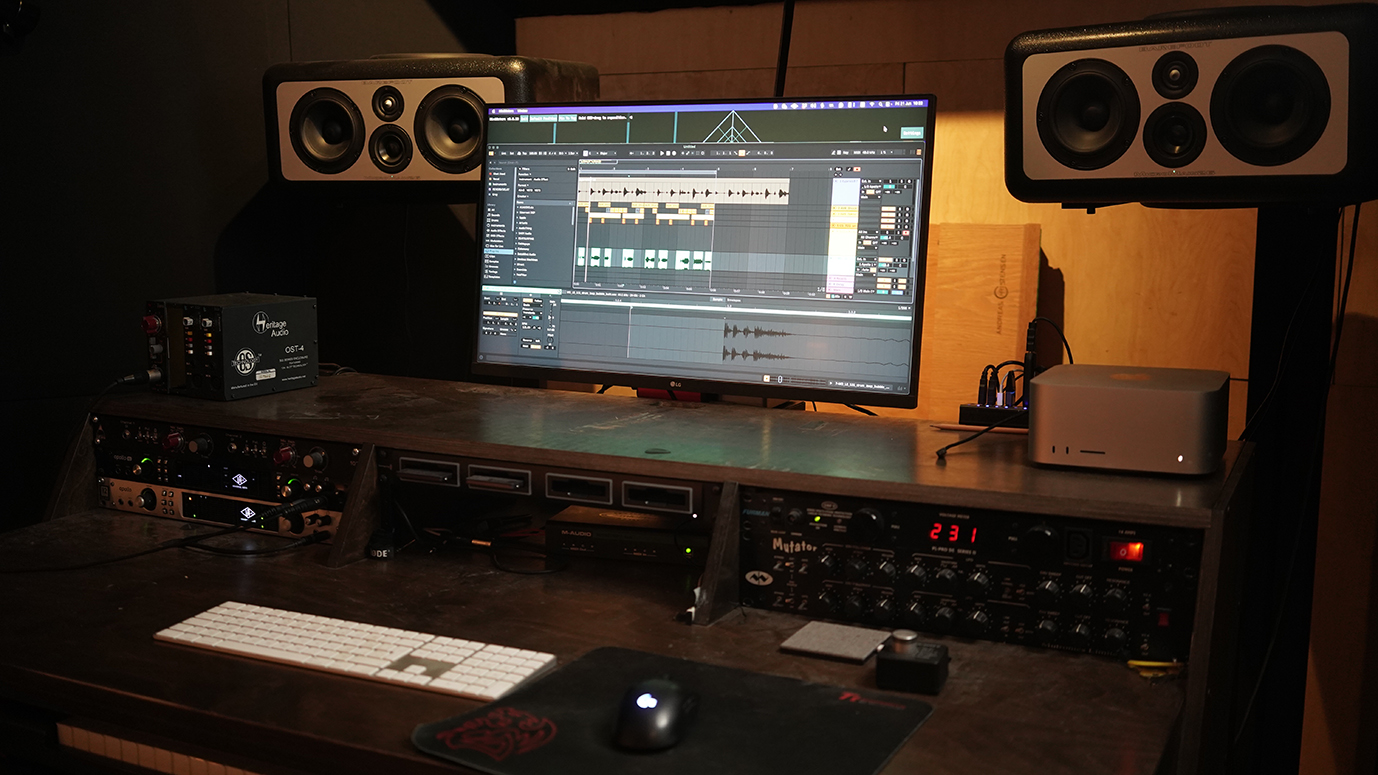
You’ve mentioned using a field recording on the track Dazed. Are there any others on the record?
Janus: “There’s one really fun one on Laced. It’s a field recording/reamping. We were in Bali writing these songs and we wanted a kind of breakdown. I had this idea - ‘what if I take my field recorder and then walk out of the room while the breakdown is happening as far away as I can into the garden?’ That take is in the song.
“So you line it up with the breakdown and then it fades into a field recording of someone walking away. You can really feel it when you listen to it on good speakers; the sound is not just being filtered, you’re actually walking away from the sound, and then you can just hear crickets.
“We did this trick a few times where we’ll record the room, even just on the iPhone. If we want this crushed, weird mono sound to do a snippet before a breakdown, we’d just record the room, really trashy, then insert it right before the breakdown.”
There is something about the sound of the iPhone mic, isn’t there…
Oli: “I love the iPhone mic.”
Janus: “It sounds almost too good - sometimes you have to lo-fi it even more!”
Kiasmos’ II is out now on Erased Tapes.



I'm MusicRadar's Tech Editor, working across everything from product news and gear-focused features to artist interviews and tech tutorials. I love electronic music and I'm perpetually fascinated by the tools we use to make it. When I'm not behind my laptop keyboard, you'll probably find me behind a MIDI keyboard, carefully crafting the beginnings of another project that I'll ultimately abandon to the creative graveyard that is my overstuffed hard drive.
“I called out to Mutt and said, ‘How about this?’... It was a complete fluke": How Def Leppard created a rock anthem - with a little bit of divine intervention
"It was ugly, like watching a divorce between four people. After a while, I had to get out": Beatles engineer Geoff Emerick on the recording of Abbey Road, track-by-track
